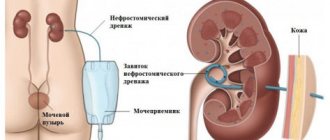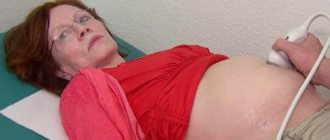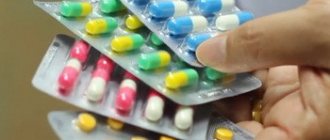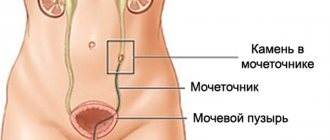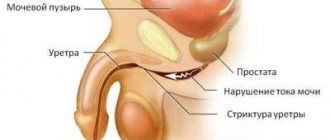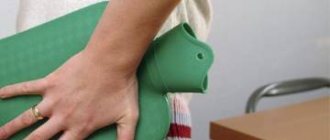Nephropexy - an operation to sutured an abnormally mobile kidney is prescribed only in 1-5% of cases of the total percentage of patients. But this is the only way to immobilize an organ lowered into the abdominal cavity.
If in the early stages the disease can be corrected with conservative therapy, then later stages of prolapse require surgical intervention.
Causes of nephroptosis
Kidney prolapse is a pathology in which the organ leaves the bed and descends into the abdominal cavity. Abnormal mobility of the kidney is fraught with serious complications in the form of impaired functionality of the organ, twisting around its axis, etc.
It is more often diagnosed in women than in men. Women are predisposed to the development of pathology due to increased tissue elasticity and a shortened fat capsule.
Causes and prerequisites for nephroptosis:
- sudden weight loss;
- lumbar injuries;
- infectious lesions of the abdominal organs;
- loads on the back.
Surgical intervention
It is prescribed if drug therapy and exercise therapy for grade 2 nephroptosis were ineffective. The operation will prevent the subsequent development of the pathology. Today, interventions without incisions are performed almost everywhere. Punctures are made on the patient's body. Instruments and a camera are introduced along them. By transmitting the image to the monitor, the specialist is able to accurately carry out surgical manipulations and secure the organ in the desired position using tissue. Such surgical intervention shortens the recovery period several times and reduces the likelihood of complications.
Nephropexy - indications for performance
Indications for surgery to suture an abnormally mobile kidney are:
- a pronounced pain symptom that interferes with normal life activities;
- nephroptosis in late stages;
- prolapse of the organ below the level of the 3rd lumbar vertebra;
- development of renal failure;
- disruption of the processes of urine excretion from the kidneys;
- bleeding from the renal veins;
- the presence of kidney stones;
- reversal of the kidney;
- expansion of the pelvis;
- inflammatory processes that cannot be controlled with medications.
Second stage of pathology: clinical picture
As a rule, patients visit a doctor when the disease already has fairly pronounced symptoms. Nephroptosis of the right kidney of the 2nd degree is accompanied by aching (pulling) pain in the corresponding hypochondrium. The symptom occurs due to the descent of the organ by two vertebrae when the body assumes a vertical position. If the patient lies down, the organ moves into place.
Nephroptosis of the 2nd degree is often accompanied by colic and a general deterioration of the condition. When urinating, blood may be found in the urine, especially after heavy physical activity. The pain that appears in the back spreads to the abdomen. In this regard, stage 2 nephroptosis can easily be confused with attacks of appendicitis. The pathology is often accompanied by constipation and indigestion. Some patients experience hyperthermia, decreased appetite, and pale skin. Also, the following symptoms may indicate stage 2 nephroptosis:
All of these symptoms may be signs of other diseases. In this regard, the hospital carries out differential diagnosis.
Contraindications to nephropexy
There are contraindications in the presence of which nephropexy becomes inappropriate due to the risk of developing postoperative complications:
- anemia or anemia;
- chronic pathologies during exacerbation;
- advanced age;
- displacement of the abdominal organs.
ATTENTION! If, during a preliminary examination, twisting of the kidney around its axis was detected, the operation is performed according to vital indications and has no absolute contraindications.
Authorized Products
The diet for complicated kidney nephroptosis includes unsalted vegetarian soups based on vegetables and various cereals as first courses. From flour - unleavened flatbread, salt-free bread. For main courses, it is allowed to use pre-boiled low-fat red meat (veal and beef), dietary boiled turkey and chicken. Roasting or stewing/baking meat is allowed. In small quantities, it is allowed to include low-fat varieties of boiled white fish (hake, pollock, pike, pike perch, cod) in the diet.
Boiled or stewed vegetables are used as a side dish, which can be seasoned with garden herbs. It is also allowed to use vegetable salads or vinaigrette without salted vegetables as a side dish. It is beneficial to include sago-based dishes cooked in water in your diet. You can only eat white eggs and no more than one per day. In the absence of contraindications, consumption of milk and fermented milk products in quantities of up to 300 g per day is indicated. The recommended fats are butter and various types of vegetable oil. You can eat fruits and berries in any form. To improve the taste, you can use white sauces based on milk and sour cream. Recommended drinks include fruit juices, rosehip infusion, herbal and green tea.
Table of permitted products
Source: https://medside.ru/dieta-pri-nefroptoze-pochek
Preparing for surgery
Surgery for kidney prolapse requires preliminary preparation. The patient undergoes urine and blood tests. If necessary, undergoes restorative therapy.
In addition, the doctor prescribes an appointment:
- immunostimulants;
- antibiotics;
- vitamin complexes.
This helps prevent complications and strengthen the body, which also has a positive effect on the rehabilitation process.
The patient is required to undergo an examination by a therapist, during which he receives advice about the upcoming procedure and subsequent rehabilitation. If you have chronic diseases, you must undergo an examination by specialized specialists.
The operation to return the kidney to its anatomically correct position involves insertion into the abdominal cavity. In the future, this can lead to disruption of the functionality of the press. The patient is recommended to perform a set of exercises to strengthen the abdominal muscles before the procedure.
On the eve of the operation, the patient restricts himself in nutrition, and his intestines are cleansed through an enema.
Physiotherapy
If the process is not started, exercise therapy helps, which must be performed daily to create a lasting effect:
- Bend your legs at the knee joints. Take 10-20 breaths: as you inhale, push your stomach out, and as you exhale, pull it in.
- Raising straight legs from a horizontal position.
- Pulling the lower limbs bent at the knee joints to the anterior abdominal wall (alternately and together).
- Perform leg twists for 1-2 minutes (“bicycle” while lying down).
- Lying on your back, rest your feet against the wall and perform “steps” along the wall until your legs straighten.
- Exercise “Scissors” with legs raised vertically – 1-2 minutes.
In this video you will learn alternative gymnastics for raising the kidney.
Carrying out nephropexy
Kidney lift surgery is performed open and laparoscopically. Due to the high morbidity, open access is rarely used. But in the presence of concomitant pathologies, such as obesity, heart disease, etc., this technique is the safest.
Open access
During the operation, the patient is under general anesthesia.
- The surgeon creates access to the organ by dissecting the tissue in the lumbar region layer by layer.
- After this, two mattress double sutures are placed on the lower part of the kidney.
- The kidney is then returned to its correct position and secured to the quadratus lumborum muscle with sutures.
As an alternative, the technique of fixation with a cut-out flap of muscle tissue is used.
After the operation, the natural mobility of the organ is preserved.
Maybe
Symptoms
Nephroptosis manifests itself in rather stereotypical manifestations that are common to many conditions:
- pain in the side;
- nausea;
- increased blood pressure when standing;
- the presence of blood, protein, or both in the urine.
However, one of its key features is that patients often note that the severity of symptoms decreases or disappears completely when they go to bed or in the morning hours.
The pain occurs after physical activity, coughing, lifting a load and lasts from a couple of seconds to a day. Less pronounced in a horizontal position or on the sore side. Often radiate to the perineum.
With a long-term course of the disease, neurological disorders (excitability, neurasthenia) occur. Patients are excitable and hypochondriacal.
Postoperative period
If nephropexy was performed using the open method, after the operation the patient remains in the hospital for a period of 7 days to 3 weeks.
With laparoscopic intervention, this period is reduced to 3 days. The patient is prescribed bed rest.
IMPORTANT! During the period of strict bed rest, it is necessary to place the patient so that the legs are 15–20 cm above the level of the head.
If urinary function is impaired after surgery, a catheter is inserted into the ureter. And to facilitate bowel movements, the patient is prescribed laxatives. since pushing during defecation can cause the sutures to come apart.
Antibacterial therapy helps prevent infectious lesions.
To relieve pain, the patient is prescribed painkillers.
The first few days the menu should consist exclusively of liquid food. Products that cause bloating and constipation are strictly prohibited. In this case, it is necessary to create a diet so that the body receives all the necessary vitamins and nutrients.
We can talk about complete recovery of the body 3 years after nephropexy. The main rehabilitation occurs in the first six months after correction of kidney prolapse. At this time it is necessary to limit:
- physical activity;
- sex life;
- eating heavy food and alcohol.
1.5–3 months after surgery, the patient must undergo a follow-up examination: ultrasound of the abdominal organs and intravenous urography. Based on the results of the study, the doctor evaluates the functionality of the organ and determines whether complications have developed.
Patient reviews
Reviews from patients who have undergone nephropexy are mostly positive.
Three years ago I was diagnosed with grade 3 prolapse of my right kidney. The disease did not allow me to live fully, since I constantly experienced pain in the lower back and abdomen, nausea and vomiting. The doctor recommended that I have a nephropexy. I admit, I was very afraid. But then I found out that the operation would be done laparoscopically. I prepared for it for days. Under general anesthesia, I didn’t feel anything. True, it took me a long time to leave him. There was slight pain in the area of the operated kidney. However, after a week I was discharged. There were no complications. For a year I limited physical activity and followed a diet.
Alexandra Vladimirovna, 48 years old
I was diagnosed with a symptom of a wandering kidney. The disease was accompanied by severe pain. After much suffering, I decided to have surgery. Since this was a long time ago, laparoscopy was not yet done everywhere. Nephropexy was performed in an open manner. It took a long time to recover from anesthesia. After the operation, she took a course of antibiotics to prevent the wounds from festering. The stitches took a long time to heal. But I followed all the doctor’s orders. Therefore, after a year I returned to a full life.
Svetlana Nikolaevna, 45 years old
For nephroptosis, an operation was prescribed - suturing the kidney with a laparoscope. The panic was terrible, but the doctor reassured me that this was a modern method and minimally traumatic. Indeed, a week after the laparoscopy I was discharged from the hospital. He recovered quickly, the scars are almost invisible.
Oleg Andreevich, 39 years old
Treatment
Traditional medicine is widely used in conjunction with conservative treatment in the initial stages of the disease. This will help reduce pain and the development of complications, but will not return the kidney to its normal location.
It is useful to take the following products:
- Sunflower seeds;
- Flax seeds;
- Pumpkins;
- Various nuts.
- Flax seeds should be sprinkled with water, sprinkled with powdered sugar and fried in a dry frying pan. Eat one teaspoon four times a day;
- Take the herb St. John's wort, sage, mint, wormwood, horsetail, chicory in equal proportions. Pour two tablespoons of boiling water over two glasses and simmer over low heat for 10 minutes. Take 50 ml of decoction 3 times a day;
- Pour 3 teaspoons of chopped onion peel into two glasses of boiling water, leave for half an hour, strain and drink a tablespoon four times a day;
- Take chopped oat straw, add two buckets of water and cook for an hour. Then let it brew and use it for a sitz bath twice a day. The decoction can be used repeatedly, heating it before the procedure. Take a bath every other day for 30 minutes.
Classification of the disease
The international classification of nephroptosis is based on the difference in kidney prolapse. There are only 3 degrees of the disease, but it is often not possible to accurately determine the stage of the disease. This is directly related to a person's physique. If the patient is thin, the doctor may palpate the kidney. However, if there is a large amount of subcutaneous fat, the organ will not be palpable.
In the first degree of nephroptosis, the displaced kidney can be felt only when the patient inhales, and during exhalation, the organ returns to its normal position and disappears under the ribs. Difficulties for diagnosis at this stage are mild symptoms. Plus, not all patients have an asthenic physique.
Kidney displacement in most cases is diagnosed with the onset of the second stage of the disease. By this time, the organ comes out of the hypochondrium and can be felt when the person is standing. If he lies down, the kidney is hidden, but sometimes it needs to be corrected by hand.
In the third degree of the disease, the kidney is constantly in a displaced position, both in the vertical and horizontal position of the body. During this period, the risks of negative consequences increase.
